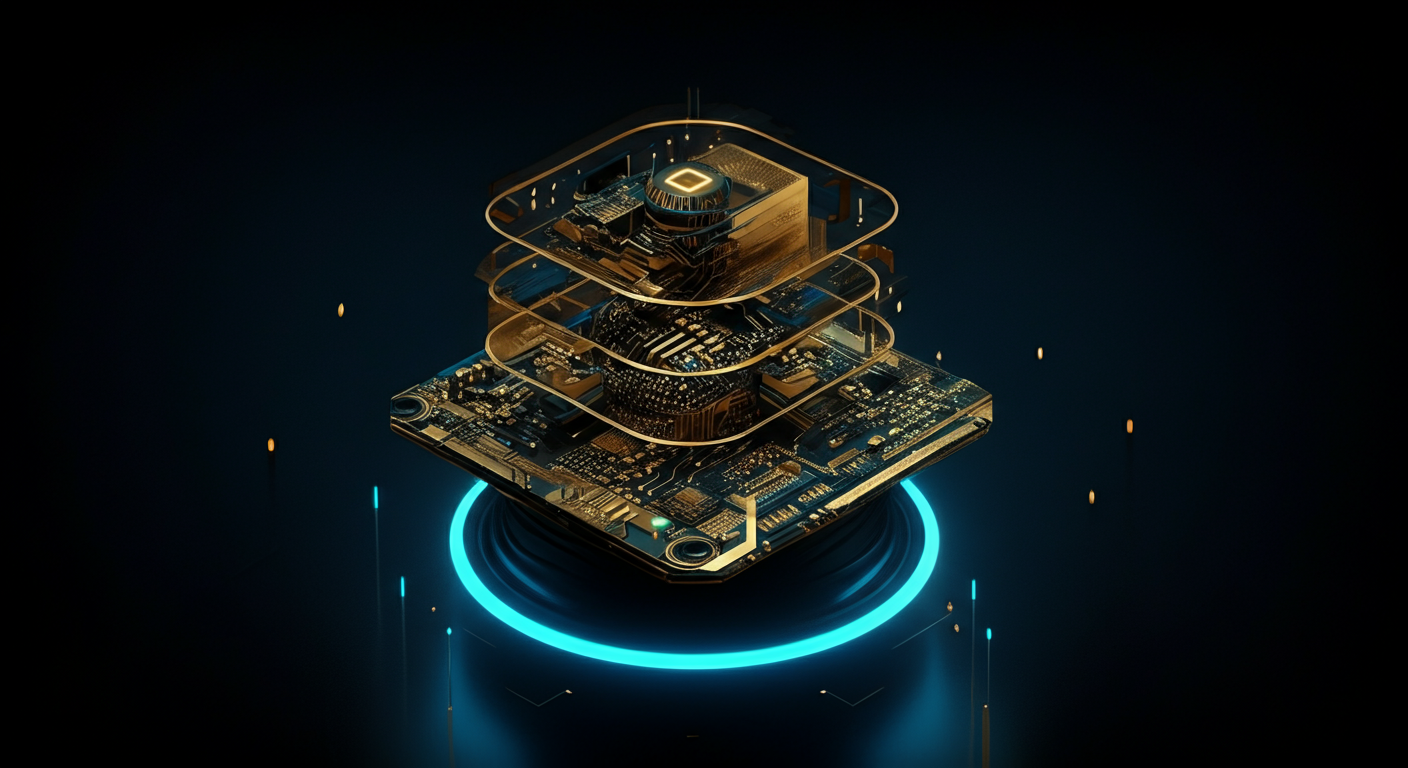GPT-4o Sunset: Navigating the Transition and Future-Proofing Your AI Applications

The impending GPT-4o Sunset: What's Happening and Why?
Buckle up, AI enthusiasts, because OpenAI just dropped a curveball: GPT-4o is heading for the digital sunset. This model, known for its speed and multimodal capabilities, will be deprecated starting February 2026, according to OpenAI's official announcement.
Why the Sunset?
Several factors appear to be driving this decision. It's not personal, it's business (and infrastructure):- Infrastructure Limitations: Running multiple models drains resources.
- Model Consolidation: OpenAI likely wants to focus on a smaller, more powerful set of core models.
- Resource Allocation: Newer, shinier models need resources, meaning older ones get the axe. Think of it as Darwinism for AI.
Impact on Users
This decision inevitably creates ripples:- Disruptions: Current GPT-4o users will need to migrate their applications.
- Potential Cost Increases: Transitioning to newer, possibly more expensive models could strain budgets.
- Need for Migration Strategies: Developers must proactively plan their migration to avoid service interruptions. You might consider exploring other multimodal models or optimizing existing workflows.
Exceptions and Extensions
As of now, there are no publicly announced exceptions or extensions to the February 2026 deadline. It's a hard stop.The Hype vs. Reality Check
"GPT-4o promised a new era of seamless human-computer interaction, but this abrupt end feels like a rug pull."
The initial buzz surrounding GPT-4o was massive. Its deprecation highlights the ever-evolving nature of AI and the need for users to adapt quickly. This situation underscores a critical lesson: don't get too attached to any one model; future-proof your applications.
Navigating the AI tool marketplace requires staying informed about model deprecations and having alternative solutions ready. Consider this a reminder to diversify your AI toolkit and embrace change.
Navigating the AI landscape requires understanding your options as GPT-4o phases out.
GPT-4o vs. GPT-4 Turbo

Let's break down the key differences between these two OpenAI powerhouses:
- Performance Benchmarks: While GPT-4o excels in speed, GPT-4 Turbo offers a larger context window, allowing for more complex tasks. Think of it this way: GPT-4o is the sprinter, GPT-4 Turbo the long-distance runner.
- Cost Analysis: GPT-4 Turbo is generally more cost-effective for tasks that require extensive context due to its efficient token processing. Check out pricing here
- Feature Comparison: GPT-4o shines with its multimodal capabilities, handling audio and visual inputs natively. GPT-4 Turbo, on the other hand, provides more consistent and reliable text generation.
GPT-5: The Horizon
While officially under wraps, speculation abounds about GPT-5.- Potential Release Timeline: Most analysts predict a late 2025 or early 2026 release, but AI development is notoriously unpredictable.
- Expected Improvements: Greater reasoning capabilities, improved context retention, and enhanced safety measures are anticipated.
- Functionality Replacement: GPT-5 is expected to subsume and improve upon GPT-4o's functionalities, potentially rendering it obsolete.
Exploring Other OpenAI and Third-Party Models

Don't limit yourself to just the big names:
- OpenAI Models: GPT-3.5 Turbo offers a balance of performance and cost. Embedding models excel at semantic search, while fine-tuned models cater to specialized tasks.
- Third-Party AI Models: Consider options like Claude, Gemini, or even open-source models. Each has unique strengths and weaknesses.
In summary, the sunsetting of GPT-4o encourages strategic exploration. By understanding the nuances of available models, you can future-proof your AI applications and optimize performance.
Navigating the sunset of GPT-4o requires a well-defined strategy to minimize disruption and ensure the continuity of your AI-powered applications.
Auditing Your Current GPT-4o Usage
Before diving into migration, take stock of your existing applications:- Identify critical applications: Which applications rely heavily on GPT-4o, OpenAI's powerful language model, and what functions do they perform? GPT-4o is known for its speed and multimodal capabilities.
- Data dependencies: What data is fed into these applications, and how is it structured?
- API integrations: How are you interacting with GPT-4o's API? Consider tools that can help you manage these integrations like Langchain.
Developing a Migration Plan
A comprehensive plan is essential:- Timeline: Set a realistic timeline for migration, accounting for testing and potential setbacks.
- Resource allocation: Dedicate personnel and budget to the migration effort.
- Testing procedures: Establish robust testing to ensure new models match or exceed the performance of GPT-4o.
- Rollback strategy: Have a contingency plan in case the migration encounters unforeseen issues.
Code Migration Techniques
Adapting your code requires careful attention:- API calls: Update API calls to align with the new model's requirements.
- Data format changes: Modify data structures as needed to be compatible with the replacement model.
- Model optimization: Explore techniques like quantization to optimize new models for performance.
Testing and Validation
Rigorous testing is non-negotiable:- Performance parity: Ensure the new model performs as well as or better than GPT-4o in key metrics.
- Regression testing: Identify and address any regressions introduced during the migration.
- Monitoring: Implement continuous monitoring to detect unexpected behaviors or performance degradation post-migration.
Navigating the post-GPT-4o landscape demands a strategic approach to maintaining both performance and cost-effectiveness for your AI applications.
Prompt Engineering: The Art of Efficiency
Refining your prompts is paramount for AI model optimization. Consider these techniques:
- Specificity: Tailor prompts to focus on the task at hand.
- Conciseness: Reduce unnecessary words to minimize token usage. Every token counts, affecting both speed and cost.
- Format Optimization: Structure prompts for clarity, guiding the AI efficiently. This can lead to improved response quality with fewer resources.
Fine-Tuning for Customization
Fine-tuning allows you to customize models for specific applications. This process involves:
- Leveraging transfer learning, which uses pre-trained models as a starting point.
- Training models using domain-specific data. For example, fine-tuning a model on medical texts can improve accuracy in healthcare applications.
- Optimizing for performance by tailoring models to specific hardware.
API Monitoring: Keeping an Eye on Costs
Careful API monitoring is crucial for managing expenses. Effective strategies include:
- Tracking token consumption per request.
- Identifying areas for prompt optimization.
- Setting usage budgets to prevent unexpected costs.
Cost-Saving Strategies: Practical Tips
Here's how to implement cost-saving strategies:
- Caching: Store and reuse frequently requested results.
- Rate Limiting: Control the number of requests to prevent overuse.
- Asynchronous Processing: Defer non-critical tasks.
- Model Selection: Use cheaper models for tasks that don't require top-tier performance.
Navigating AI model transitions requires planning, but also provides opportunities to improve application resilience.
Adopting a Model-Agnostic Approach
One crucial strategy is adopting a model-agnostic approach. This means designing your applications so they can easily switch between different AI models and providers. Think of it like building a house with standardized parts – you can swap out a window from one manufacturer for another without rebuilding the entire wall. This can involve:- Creating abstract layers in your code that interact with AI models through a common interface.
- Using configuration files to specify which model is currently active.
- Evaluating alternative models regularly and having a clear process for switching.
Investing in AI Infrastructure
Investing in robust AI infrastructure is also essential. This includes:- Scalable compute resources to handle varying workloads.
- > Think cloud-based solutions like AWS, Azure, or Google Cloud.
- Data pipelines that can efficiently process and transform data for different models.
- Monitoring tools that provide real-time insights into model performance and identify potential issues.
Staying Informed About AI Advancements
The AI landscape is constantly evolving, so staying informed is critical.- Track new models and techniques through research papers and industry publications.
- Follow industry trends by attending conferences and webinars.
- Experiment with new models to understand their capabilities and limitations.
Building In-House AI Expertise
Finally, cultivate in-house AI expertise.- Train your team on the latest AI technologies and best practices.
- Consider hiring AI specialists to provide guidance and support.
- Foster a culture of innovation that encourages experimentation and learning.
By embracing these strategies, you can navigate the GPT-4o sunset and future-proof your AI investments. Planning and adaptation are key.
Navigating the sunsetting of GPT-4o doesn't have to be a solo mission.
OpenAI Developer Forums and Documentation
The first port of call should always be the official sources:- OpenAI Developer Forums: These forums provide direct access to the pulse of the OpenAI developer community. You can troubleshoot issues, share insights, and connect with other developers facing similar transitions.
- Official OpenAI Documentation: Don't underestimate the power of a well-documented API. Accessing the official documentation will help you solve issues with the most accurate and up-to-date tool information.
Online AI Communities and Forums
Beyond official channels, the broader AI community offers a wealth of knowledge:- Reddit (r/MachineLearning, r/artificialintelligence): These subreddits are hotspots for discussions on AI trends, challenges, and solutions.
- Stack Overflow: A classic Q&A platform, where you can find answers to specific coding or implementation problems.
- Discord Servers: Many AI-focused communities have Discord servers dedicated to specific tools or topics.
AI Consulting Services and Experts
Sometimes, you need a specialist:- AI Consulting Services: AI consulting services can provide tailored support for migrating your applications, optimizing performance, and future-proofing your AI strategy. They can assist you in building a future for your business in the age of AI.
- Independent AI Experts: Hiring an experienced AI engineer can be a cost-effective solution for smaller projects or specific tasks.
Open-Source AI Tools and Libraries
Don't forget the power of open-source:- Hugging Face: A central hub for pre-trained models, datasets, and tools for the AI community.
- TensorFlow and PyTorch: These deep learning frameworks have extensive community support and a vast ecosystem of libraries.
Keywords
GPT-4o, GPT-4 Turbo, OpenAI, AI models, API deprecation, Migration strategy, AI optimization, Prompt engineering, AI alternatives, Future-proofing, GPT-5, AI investment, Model-agnostic AI, AI infrastructure, OpenAI API
Hashtags
#GPT4o #OpenAI #AIMigration #AIOptimization #FutureofAI
Recommended AI tools

Your AI assistant for conversation, research, and productivity—now with apps and advanced voice features.

Bring your ideas to life: create realistic videos from text, images, or video with AI-powered Sora.

Your everyday Google AI assistant for creativity, research, and productivity

Accurate answers, powered by AI.

Open-weight, efficient AI models for advanced reasoning and research.

Generate on-brand AI images from text, sketches, or photos—fast, realistic, and ready for commercial use.
About the Author

Written by
Dr. William Bobos
Dr. William Bobos (known as 'Dr. Bob') is a long-time AI expert focused on practical evaluations of AI tools and frameworks. He frequently tests new releases, reads academic papers, and tracks industry news to translate breakthroughs into real-world use. At Best AI Tools, he curates clear, actionable insights for builders, researchers, and decision-makers.
More from Dr.

